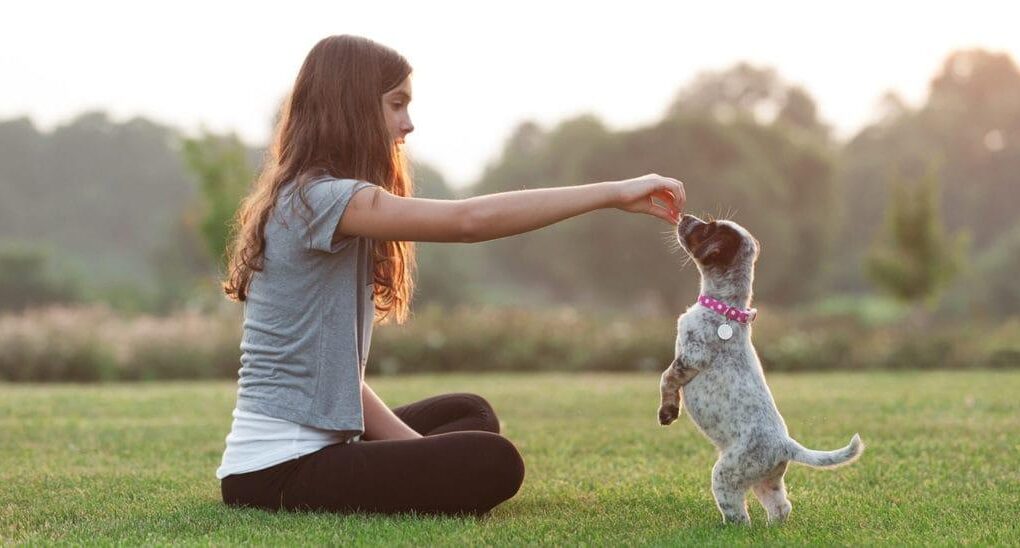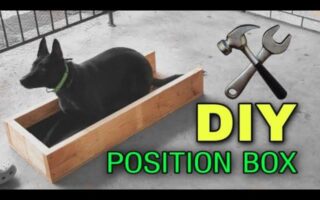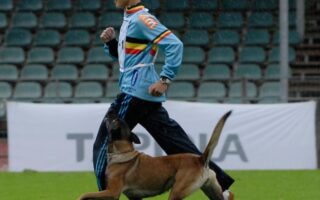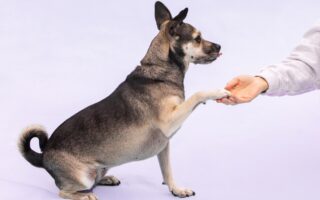Welcoming a puppy into your home is a joyful experience filled with wagging tails, playful antics, and an abundance of unconditional love. However, the journey of house training can often feel overwhelming for new pet owners navigating this uncharted territory. Understanding the nuances of puppy behavior and establishing a consistent routine are key to transforming your little furball into a well-mannered companion. In this article, we will explore effective strategies, tips, and tricks to help you master the art of house training, ensuring a harmonious coexistence between you and your new best friend. With patience and perseverance, you can turn the challenges of puppyhood into opportunities for learning and bonding, setting the foundation for a happy, lifelong relationship.
Table of Contents
- Understanding Puppy Behavior and Natural Instincts
- Establishing a Consistent Routine for Successful Training
- Effective Techniques for Reinforcing Positive Bathroom Habits
- Common Challenges in House Training and How to Overcome Them
- Q&A
- The Way Forward
Understanding Puppy Behavior and Natural Instincts
To effectively house train a puppy, it’s essential to understand the underlying behaviors and instincts that govern their actions. Puppies are driven by their natural instincts to avoid soiling their sleeping area; thus, they will typically seek out a designated spot to relieve themselves. Recognizing this instinct can significantly aid in the training process. Implementing a consistent schedule for bathroom breaks helps teach your puppy when and where it’s appropriate to do their business. Pay attention to your puppy’s signals, such as pacing, sniffing, or whining, which indicate that they need to go outside.
Incorporating positive reinforcement techniques can also enhance the training experience. Celebrating your puppy’s successes with verbal praise, treats, or playtime encourages them to associate going outside with a positive outcome. Consider the following strategies when establishing a supportive environment for your puppy:
- Consistency: Take your puppy out at regular intervals.
- Designated Spots: Choose specific areas for bathroom breaks.
- Supervision: Keep an eye on your puppy indoors to catch any signs of needing to go.
- Accidents: Remain calm and clean up without scolding.
Establishing a Consistent Routine for Successful Training
Creating a predictable daily schedule is key to house training a puppy effectively. By establishing specific times for feeding, bathroom breaks, and playtime, your puppy will start associating these activities with a routine, thus reducing accidents indoors. Consider the following elements to integrate into your puppy’s routine:
- Consistent Feeding Times: Feed your puppy at the same times each day to regulate their bathroom needs.
- Scheduled Bathroom Breaks: Take your puppy out first thing in the morning, after meals, and before bedtime.
- Designate a ’Potty Spot’: Always take your puppy to the same spot outside to help them understand where it’s acceptable to go.
- Engaging Play Sessions: Include short, interactive playtimes to keep your puppy mentally and physically stimulated.
Maintaining this routine doesn’t have to be tedious—consistency can be enjoyable! You can create a simple table to track your puppy’s progress and adjust as needed:
| Day | Feeding Times | Bathroom Breaks | Playtime |
|---|---|---|---|
| Monday | 8 AM, 5 PM | 8:15 AM, 5:15 PM | 10 AM, 6 PM |
| Tuesday | 8 AM, 5 PM | 8:15 AM, 5:15 PM | 10 AM, 6 PM |
| Wednesday | 8 AM, 5 PM | 8:15 AM, 5:15 PM | 10 AM, 6 PM |
Regularly reviewing this routine can help you identify patterns or issues, adjusting as necessary to fit your puppy’s unique needs. Remember, the goal is to be patient and persistent; with a solid schedule, your puppy will soon learn the correct behaviors and feel more secure in their environment.
Effective Techniques for Reinforcing Positive Bathroom Habits
Establishing a routine is crucial for promoting good bathroom behavior in your puppy. Puppies thrive on consistency, so try to take them outside at the same times each day. This could be first thing in the morning, after meals, and just before bed. Using a designated spot in your yard for bathroom breaks can help your puppy associate that area with elimination. Additionally, consider keeping a diary to track your puppy’s bathroom habits; this can help you anticipate their needs and adjust the schedule accordingly.
Positive reinforcement plays a significant role in shaping behavior. When your puppy successfully goes to the bathroom outside, immediately reward them with praise or a small treat. This creates a positive association with the action. Avoid scolding your puppy for accidents; instead, clean them up without fuss, as negative reinforcement can lead to confusion. Consider using a visual cue such as a command word like ”go potty” to help your puppy understand what is expected of them. Here’s a simple table outlining the benefits of positive reinforcement:
| Technique | Benefit |
|---|---|
| Consistent Schedule | Encourages regular bathroom breaks and reduces accidents. |
| Positive Reinforcement | Boosts confidence and reinforces desired behavior. |
| Designated Bathroom Spot | Helps establish a specific area for elimination. |
| Visual Cue | Helps convey expectations clearly to the puppy. |
Common Challenges in House Training and How to Overcome Them
House training a puppy can come with a variety of challenges that can test even the most patient pet owner. One common issue is inconsistency in routines. Puppies thrive on regular schedules, and any variance can confuse them. To combat this, establish a consistent feeding and bathroom schedule. Use the following tips to maintain routine:
- Feed at the same times daily: This helps regulate bathroom breaks.
- Take your puppy out frequently: Especially after eating, drinking, or waking up.
- Use commands: Encourage your puppy’s understanding of cues like “go potty.”
Another challenge is accidents in the house, which can be disheartening. It’s essential to respond to these incidents without scolding the puppy, as punishment can lead to fear and confusion. Instead, focus on these proactive strategies:
- Positive reinforcement: Reward your puppy with praise or treats immediately after they eliminate outside.
- Identify patterns: Keep track of when accidents happen to better anticipate bathroom needs.
- Limit access: When you can’t supervise, confine your puppy to a crate or a small room.
Q&A
Q&A: House Training Your Puppy
Q1: What is the first step I should take when house training my puppy?
A1: The first step on your puppy’s journey to being house trained is establishing a designated potty area outside. Choose a specific spot in your yard, or within your apartment complex, where you want your puppy to relieve themselves. This consistency will help your puppy understand where they are expected to go.
Q2: How often should I take my puppy outside?
A2: Puppies have small bladders and limited control, so they need frequent potty breaks. As a general rule, take your puppy outside every two hours, as well as after meals, playtime, and waking up. As they mature, you can gradually increase the time between potty breaks.
Q3: Should I praise my puppy when they go potty outside?
A3: Absolutely! Positive reinforcement is key. When your puppy successfully goes potty in the designated area, celebrate with enthusiastic praise and a small treat. This will reinforce the behavior and help them associate going outside with positive outcomes.
Q4: What should I do if my puppy has an accident indoors?
A4: Accidents are a normal part of the learning process! If your puppy has an accident indoors, avoid scolding them, as this can create anxiety around potty training. Instead, clean the area thoroughly to remove any lingering odors, and take your puppy outside immediately. Use the accident as a teaching moment for both of you!
Q5: Can crate training assist in house training?
A5: Yes! Crate training can be an effective tool for house training. Dogs naturally avoid soiling their sleeping area, so a properly sized crate can encourage them to hold it until they can go outside. Just ensure that your puppy isn’t left in the crate for extended periods, which can lead to anxiety and discomfort.
Q6: How long will it take to fully house train my puppy?
A6: The timeline for house training can vary widely depending on the puppy’s age, breed, and the consistency of your training methods. Generally, most puppies can be reliably house trained within four to six months, but patience is key. Each puppy is unique!
Q7: Are there certain breeds that are easier to house train than others?
A7: While every puppy is an individual, some breeds are known to take to house training more quickly due to their intelligence or eagerness to please. Breeds like Labrador Retrievers, Poodles, and German Shepherds often catch on quickly, while others may require a bit more time and patience.
Q8: What happens if my puppy seems to regress in their training?
A8: Regression can happen, especially during changes in routine, stress, or health issues. If your puppy begins having accidents after they were previously house trained, take a close look at their environment and routine. It’s essential to remain patient and consistent. If you suspect a health issue, consulting a veterinarian is always a good idea.
Q9: Is it helpful to keep a potty training log?
A9: Keeping a potty training log can be incredibly beneficial! Documenting when your puppy eats, drinks, plays, and eliminates can help you identify patterns and anticipate when they need to go outside. This can enhance your training consistency and aid in avoiding accidents.
Q10: What final tips can you give for successful house training?
A10: Stay patient, consistent, and positive throughout the process. Always maintain a regular feeding schedule, watch your puppy closely for signs they need to go outside, and continue to use lots of praise and treats. Remember, this is a learning experience for both of you, filled with growth and opportunity!
The Way Forward
As we conclude our journey through the essential steps of house training a puppy, it’s important to remember that patience and consistency are your greatest allies. Each little step, every successful outing, and even the occasional mishap contribute to the beautiful tapestry of your puppy’s growth and learning. Embrace the challenges with an open heart, and celebrate the victories, no matter how small they may seem. With time, your commitment will bear fruit, transforming your energetic bundle of fur into a well-behaved companion. So, as you embark on this rewarding adventure, remember: every pup is unique, and their journey will unfold in its own time. Here’s to many joyful moments—and countless tail wags—ahead!



